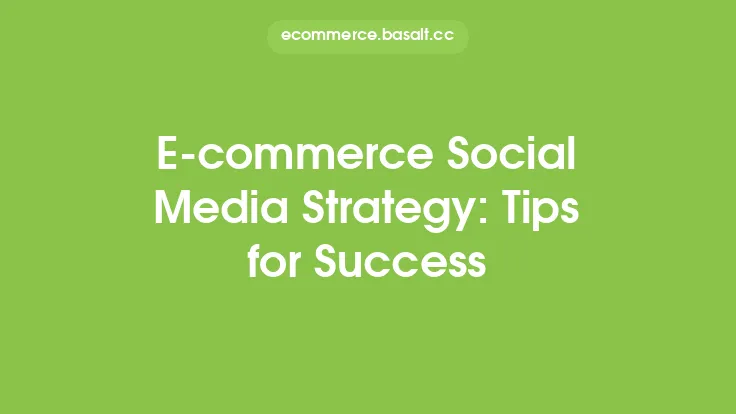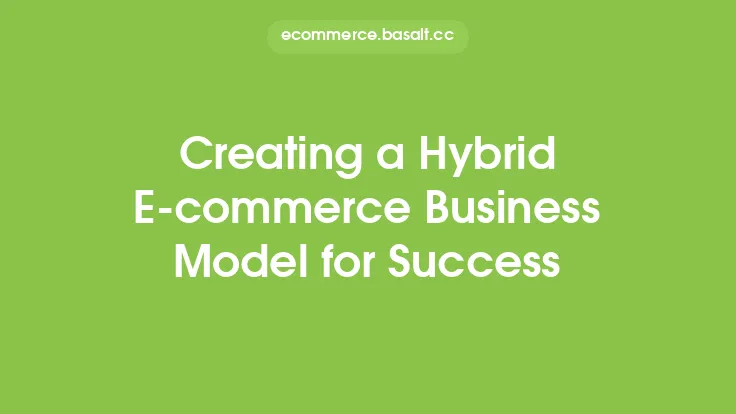As an e-commerce business owner, managing your social media presence can be a daunting task, especially when it comes to creating and scheduling content. With so many platforms to maintain and a constant need for fresh, engaging content, it's easy to get overwhelmed. This is where a social media content calendar comes in – a powerful tool that helps you plan, organize, and schedule your social media content in advance. In this article, we'll explore the benefits of using a social media content calendar for your e-commerce business and provide a step-by-step guide on how to create one.
Benefits of a Social Media Content Calendar
A social media content calendar offers numerous benefits for e-commerce businesses. Firstly, it helps you save time and increase efficiency by allowing you to plan and schedule content in advance. This means you can focus on other aspects of your business, such as product development, customer service, and marketing strategy. A content calendar also ensures consistency, which is crucial for building a strong brand identity and maintaining a consistent tone across all your social media platforms. Additionally, a content calendar helps you avoid last-minute scrambles to come up with content, reducing the likelihood of posting low-quality or irrelevant content that may not resonate with your audience.
Choosing a Content Calendar Template
To create a social media content calendar, you'll need a template that suits your business needs. There are many templates available online, ranging from simple spreadsheets to complex project management tools. When choosing a template, consider the following factors: the number of social media platforms you're active on, the type of content you'll be posting, and the frequency of your posts. You may also want to consider a template that allows you to track engagement metrics, such as likes, comments, and shares, to help you refine your content strategy over time. Some popular content calendar templates include Google Sheets, Microsoft Excel, and Trello.
Planning Your Content
Once you have a template, it's time to start planning your content. This involves brainstorming ideas, assigning topics to specific dates, and scheduling posts in advance. To get started, consider the following steps:
- Identify your content themes: What type of content do you want to post? This could include product promotions, behind-the-scenes stories, customer testimonials, or educational content related to your industry.
- Determine your posting schedule: How often will you post on each platform? This will depend on your audience's preferences and the platform's algorithms.
- Assign topics to specific dates: Use your template to assign topics to specific dates, taking into account any upcoming events, holidays, or promotions that may be relevant to your business.
- Develop a content library: Create a library of evergreen content that can be used across multiple platforms and over time. This could include blog posts, videos, infographics, and social media posts.
Scheduling and Publishing Content
With your content planned and scheduled, it's time to publish it. There are many tools available to help you schedule and publish content in advance, including Hootsuite, Buffer, and Sprout Social. These tools allow you to upload your content, select the platforms you want to post on, and schedule the posts to go live at a specific time. You can also use these tools to track engagement metrics and refine your content strategy over time. When scheduling content, be sure to consider the following best practices:
- Post at optimal times: Use analytics tools to determine when your audience is most active and engaged.
- Use eye-catching visuals: Include high-quality images, videos, or graphics to make your content stand out.
- Keep it concise: Keep your social media posts short and to the point, using clear and compelling language.
Tracking and Refining Your Content Strategy
Finally, it's essential to track and refine your content strategy over time. This involves monitoring engagement metrics, such as likes, comments, and shares, and using this data to inform future content decisions. You can use analytics tools, such as Google Analytics or social media insights, to track your performance and identify areas for improvement. By refining your content strategy, you can increase engagement, drive sales, and build a loyal community of customers who will advocate for your brand.
Tips and Best Practices
To get the most out of your social media content calendar, keep the following tips and best practices in mind:
- Be consistent: Post content regularly to maintain a consistent tone and keep your audience engaged.
- Be flexible: Be prepared to adjust your content calendar in response to changes in your business or industry.
- Use a mix of content types: Include a mix of promotional, educational, and entertaining content to keep your audience engaged.
- Engage with your audience: Respond to comments and messages in a timely and personalized manner to build trust and loyalty.
- Keep it fresh: Continuously update and refresh your content to avoid repetition and keep your audience interested.
By following these tips and best practices, you can create a social media content calendar that helps you build a strong brand identity, drive sales, and engage with your audience. Remember to stay flexible, be consistent, and continuously refine your content strategy to ensure long-term success.





